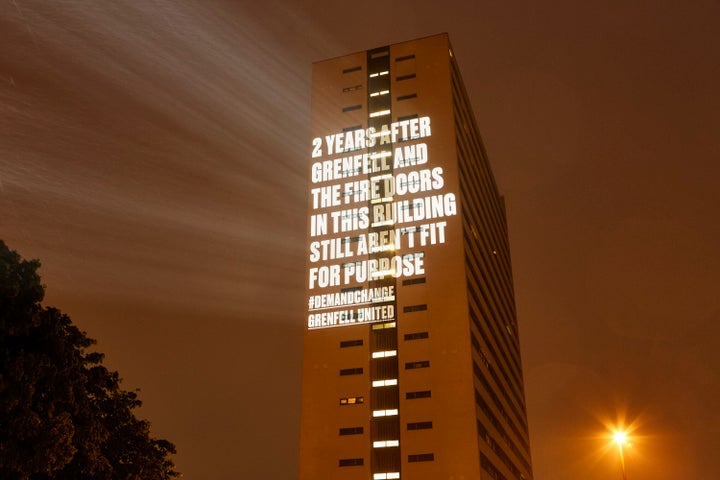A Treasury bail-out could pay for the removal of Grenfell-style cladding still covering hundreds of tower blocks as the government admitted progress to address a series of fire safety issues had been “unacceptably slow”.
More than two years after the west London blaze that killed 72 people, housing secretary Robert Jenrick outlined a crackdown that would represent the “biggest change to our building safety regime for 40 years”.
Some 315 high-rise buildings are still covered in flammable aluminium composite material (ACM) cladding, the same material blamed for the rapid spread of the Grenfell blaze.
Other issues include thousands of faulty fire doors still being in use and buildings shorter than 18m being excluded from a cladding ban.
In the House of Commons on Monday, Jenrick said he was preparing to name and shame those responsible for private buildings that have yet to start getting rid of “unsafe ACM cladding”.
The cabinet minister also told MPs he would begin immediately to establish a new building safety regulator, and that he is “minded” to lower the height threshold for sprinkler requirements in new buildings from 18m to 11m.
Jenrick added the 18m height threshold on the ban on cladding, introduced in December 2018, could be also be lowered “to at least 11 metres”, as he said regulations had for many years “relied on crude height limits”.

The height threshold was criticised in the aftermath of a fire that gutted student housing in Bolton last November. The Cube building was found to be 14cm short of the restriction, which meant the high-pressure laminate (HPL) cladding covering the building met regulations. The Fire Brigades Union says 11m is important as it is the height modern-day fire brigade cherry-pickers can reach.
ACM cladding has left leaseholders in private apartment blocks in limbo as many landlords refuse to remove the material, leaving residents with sky-high bills to remediate the buildings themselves. Campaigners have spoken of how their homes are unsellable, and said the uncertainty has caused anxiety, illness and financial pain.
Government cash to help leaseholders through the £200m Private Sector Remediation Fund has been approved for just one building, but Jenrick hinted at more financial support from the state. “I am considering with Her Majesty’s Treasury options to support leaseholders,” he said.
Jenrick said the remediation of “unsafe ACM cladding, especially in the private sector, is still far too slow”. He continued: “Inaction must have consequences.” Detailed proposals are to be set out in February.
Shadow housing secretary John Healey said the proposals are “too little, at least two years too late”.
He said: “Why, two-and-a-half years later, are 315 high-rise blocks still cloaked in the same Grenfell-style cladding? Why have 76 of these block owners not even got a plan in place to replace the deadly cladding?
“Why have 91 social tower block landlords still not replaced their ACM cladding when the secretary of state, this secretary of state, promised this would be done by last year?”
